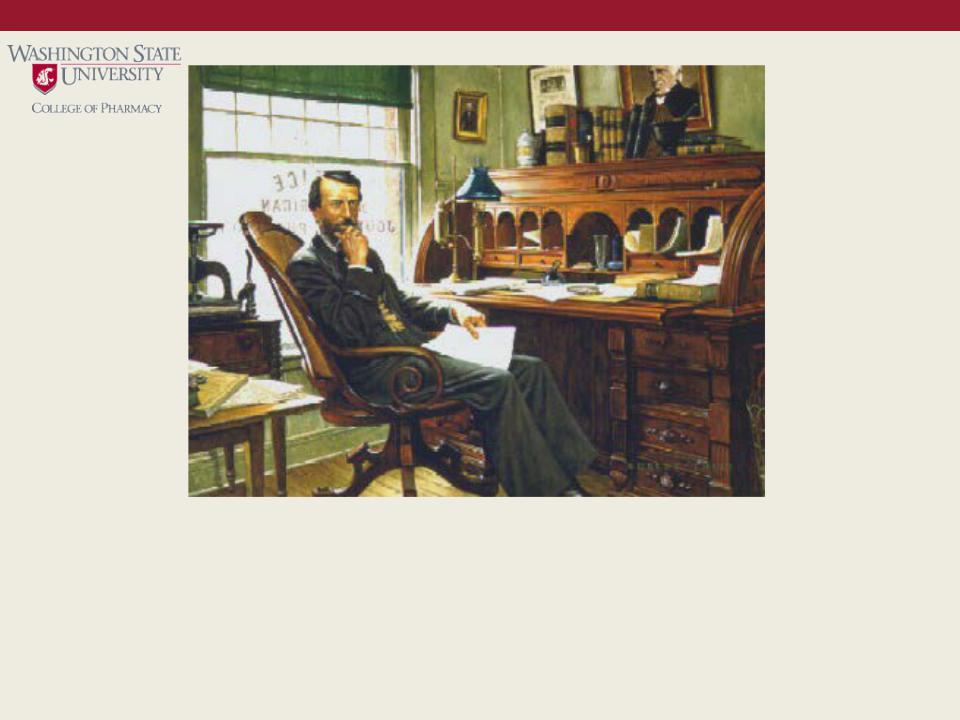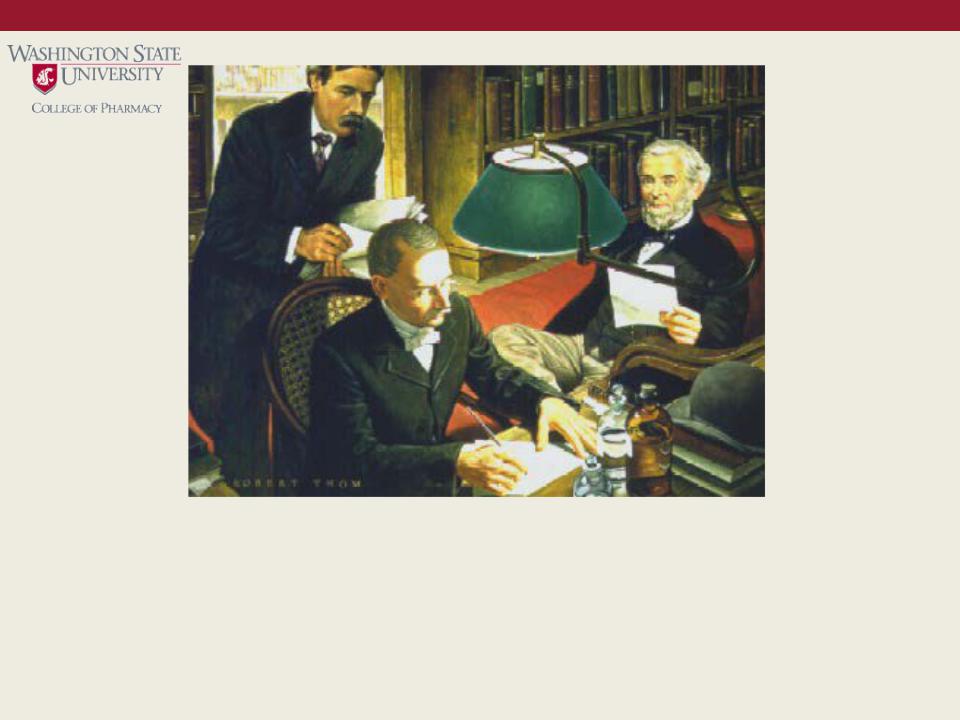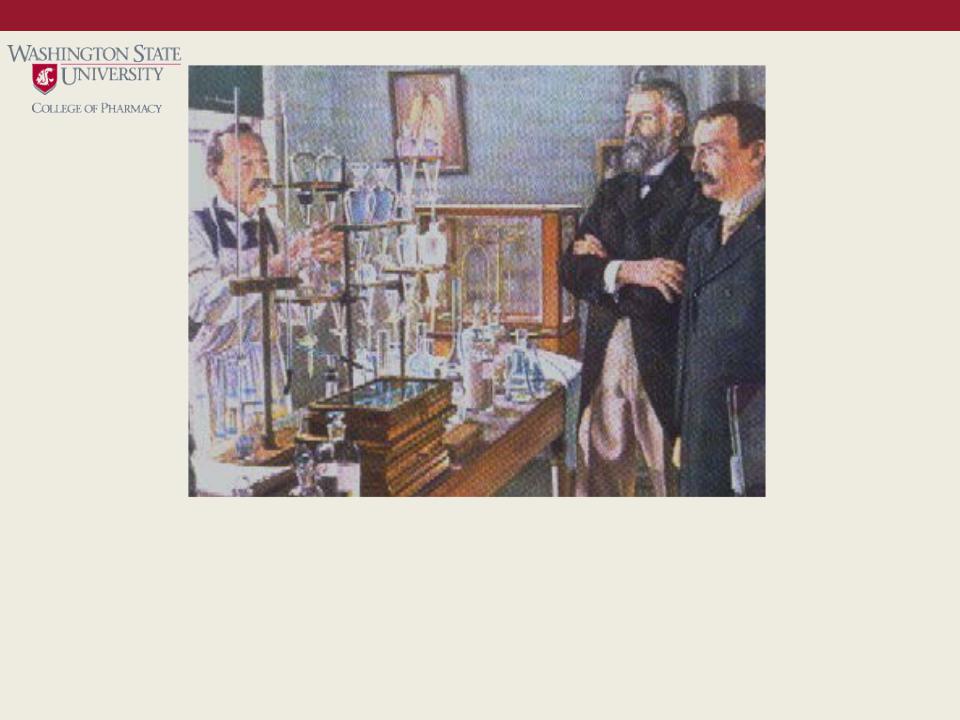
- •1. Before the Dawn of History
- •2. Pharmacy in Ancient Babylonia
- •3. Pharmacy in Ancient China
- •4. Days of the Papyrus Ebers
- •5. Theophrastus – Father of Botany
- •6. The Royal Toxicologist – Mithridates VI
- •7. Terra Sigillata – An Early “Trademarked” Drug
- •8. Dioscorides – A Scientist Looks at Drugs
- •9. Galen – Experimenter in Drug Compounding
- •10. Damian and Cosmas – Pharmacy’s Patron Saints
- •11. Monastic Pharmacy
- •12. The First Apothecary Shops
- •13. Avicenna – The “Persian Galen”
- •14. Separation of Pharmacy and Medicine
- •15. The First Official Pharacopeia
- •16. The Society of Apothecaries of London
- •17. Louis Hébert, Apothecary to New France (Canada)
- •18. The Governor who Healed the Sick
- •19. The Marshall Apothecary
- •20. First Hospital in Colonial America
- •21. Scheele – Greatest of the Pharmacists-Chemists
- •22. Craigie – America’s First Apothecary General
- •23. Sertürner – First of the Alkaloid Chemists
- •24. Caventou, Pelletier and Quinne
- •25. American Pharmacy Builds its Foundations
- •26. The Shakers and Medicinal Herbs
- •27. The American Pharmaceutical Association
- •28. European and American Pharmacy Meet
- •29. The Father of American Pharmacy
- •30. A Revolution in Pharmaceutical Education
- •31. The Pharmacopeia Comes of Age
- •32. The Standardization of Pharmaceuticals
- •33. Wresting the Jungle’s Secrets
- •34. Stanislas Limousin – Pharmacal Inventor
- •35. The Era of Biologicals
- •36. The Development of Chemotherapy
- •37. Pharmaceutical Research
- •38. Pharmaceutical Manufacturing Comes of Age
- •39. The Era of Antibiotics
- •40. Pharmacy Today and Tomorrow

29. THE FATHER OF AMERICAN PHARMACY
Rarely has a titular distinction been so deserved. William Procter, Jr., graduated from The Philadelphia College of Pharmacy in 1837; operated a retail pharmacy; served the College as Professor of Pharmacy for 20 years; was a leader in founding The American Pharmaceutical Association; served that organization as its first secretary; later, as its president; served 30 years on the U.S.P. Revision Committee; was for 22 years Editor of the American Journal of Pharmacy. In 1869, though retired, Procter continued to edit the Journal in a small publication office located beside the College's Tenth Street building. From retirement he returned to P.C.P.'s chair of Pharmacy in1872; literally died "in the harness," in 1874.

30. A REVOLUTION IN PHARMACEUTICAL EDUCATION
When Dr. Albert B. Prescott launched the pharmacy course at the University of Michigan in 1868, critical attention was aroused because he abandoned the traditional requirement of pregraduation apprenticeship. At the 1871 convention of the American Pharmaceutical Association, he was denied credentials and ostracized. However, the Michigan course pioneered other major changes: laboratory pharmacy, a definite curriculum that included basic sciences, and a program that demanded students' full-time attention. During the next thirty years, Dr. Prescott had the satisfaction of seeing his once revolutionary innovations generally adopted by pharmaceutical faculties.

31. THE PHARMACOPEIA COMES OF AGE
The first "United States Pharmacopoeia" (1820) was the work of the medical profession. It was the first book of drug standards from a professional source to have achieved a nation's acceptance. In 1877, the "U.S.P." was in danger of dissolution due to the lack of interest of the medical profession. Dr. Edward R. Squibb, manufacturing pharmacist as well as physician, took the problem to The American Pharmaceutical Association convention. Pharmacists formed a "Committee on Revision" chairmanned by hospital pharmacist Charles Rice, assisted by pharmacist-educator Joseph P. Remington, and by Dr. Squibb, their indefatigable collaborator. The "U.S. Pharmacopoeia" surged to new importance.

32. THE STANDARDIZATION OF PHARMACEUTICALS
Despite the professional skill and integrity of 19th-century pharmacists, seldom did two preparations of vegetable drugs have the same strength, even though prepared by identical processes. Plant drugs varied widely in active alkaloidal and glucosidal content. The first answer to this problem came when Parke, Davis & Company introduced standardized "Liquor Ergotae Purificatus" in 1879. Dr. Albert Brown Lyons, as the firm's Chief Chemist, further developed methods of alkaloidal assay. Messrs. Parke and Davis recognized the value of his work, and in 1883, announced a list of twenty standardized "normal liquids." Parke-Davis also pioneered in developing pharmacologic and physiologic standards for pharmaceuticals.
